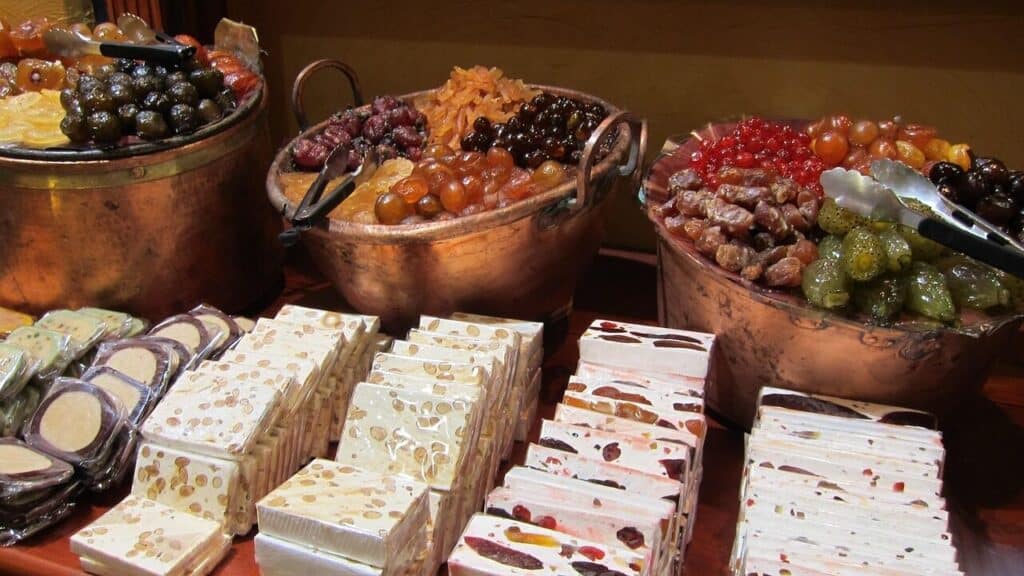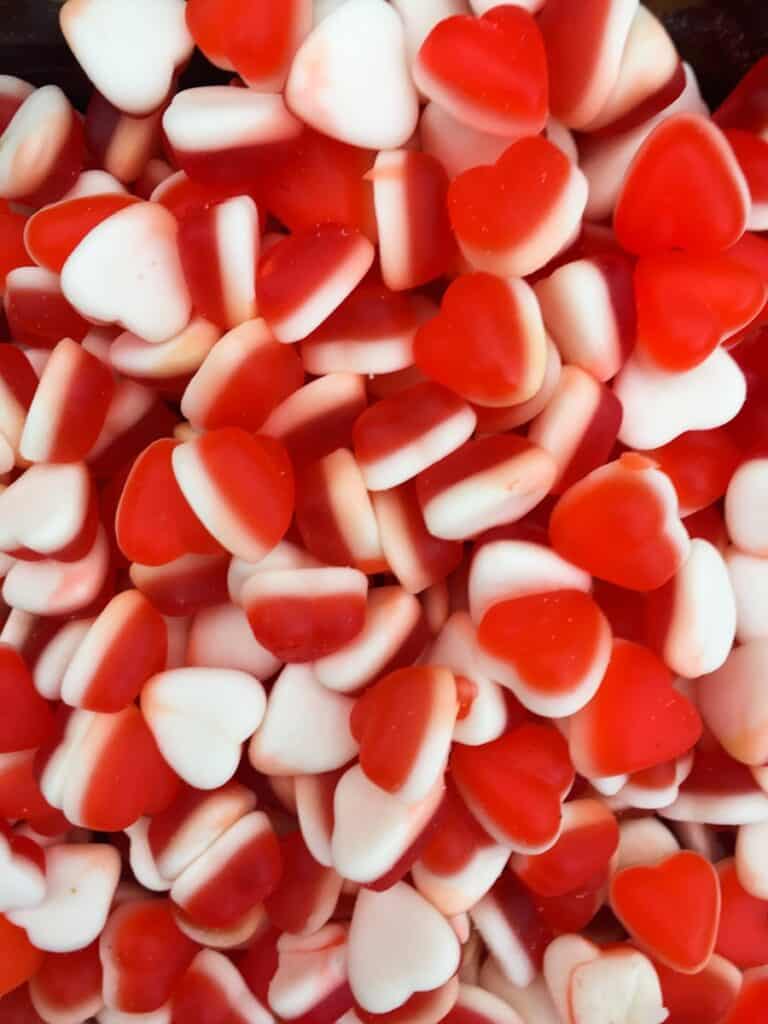La science du sucré : Une analyse technique de la fabrication des ceintures de bonbons
Au-delà de la douceur et de l'aigreur
Une ceinture de bonbons a l'air simple. Il s'agit simplement d'une bande plate de bonbons acidulés à mâcher, recouverte de poussière de sucre.
Mais ce n'est pas tout. D'un point de vue technique, chaque bonbons est un produit alimentaire conçu avec précision. Il s'agit d'une confiserie gommeuse extrudée, à haute teneur en solides et sablée, qui résulte d'un équilibre minutieux entre la chimie et le processus mécanique.
Cet article présente l'ensemble du processus. Nous explorerons les ingrédients de base et les étapes de fabrication industrielle qui transforment la bouillie en lanières. Vous découvrirez la science sensorielle unique qui sous-tend la texture et la libération des arômes. Nous aborderons également le contrôle de qualité essentiel qui permet de garantir chaque ceinture est parfaite.
Chimie des ingrédients de base
Chaque ceinture de bonbons commence par sa formulation. Chaque ingrédient est choisi non seulement pour son goût, mais aussi pour son rôle fonctionnel spécifique. Ils créent la structure, la texture et la stabilité du produit final.
L'ossature structurelle
Les sucres et les sirops constituent l'essentiel et l'ossature structurelle de la confiserie.
Le saccharose est le sucre de table commun. Il apporte le goût sucré principal et la teneur en matière solide. C'est le principal élément constitutif de la masse du bonbon.
Le sirop de maïs (ou sirop de glucose) est un "agent de raclage" essentiel. Sa fonction première est de contrôler et inhiber la cristallisation du saccharose. Cette opération est essentielle pour obtenir une texture lisse et non granuleuse.
Le sucre inverti est un mélange de glucose et de fructose. Il permet également de contrôler la cristallisation. Son principal avantage est sa nature hygroscopique, ce qui signifie qu'il attire et retient l'humidité. Cela permet d'éviter la des bonbons qui ne sèchent pas et deviennent cassants.
La teneur totale en sucre est mesurée en degrés Brix (°Bx). Il s'agit d'un paramètre essentiel. La plupart des confiseries gommeuses telles que les ceintures de bonbons sont cuites jusqu'à une concentration finale de solides de 75-82°Bx. Cela garantit la stabilité microbienne et la texture moelleuse souhaitée.
La matrice à mâcher
La mâche caractéristique d'une ceinture de bonbons provient d'un gélifiant. Celui-ci forme un réseau tridimensionnel qui emprisonne le sirop de sucre.
La gélatine est le choix le plus traditionnel. Cette protéine d'origine animale crée un gel thermoréversible. Cela signifie qu'elle fond à la température du corps. Cette propriété est à l'origine de sa "mâche" élastique classique et de l'excellente libération des arômes lorsqu'elle fond dans la bouche.
La pectine est une alternative végétale courante. Elle provient principalement des écorces d'agrumes ou des pommes. Elle crée un gel avec un profil de texture différent, souvent décrit comme "plus court" ou plus tendre. Elle a un effet mordant net plutôt qu'une traction longue et élastique. C'est la solution de choix pour les formulations végétariennes et végétaliennes.
Fonctionnalité | Gélatine | Pectine (à haute teneur en méthoxyle) |
Source | Animal (Collagène) | Plante (Agrumes/Pomme) |
Profil de texture | Elastique, à mâcher, gommeux | Morsure courte, tendre et nette |
pH Exigence | Large éventail (4.0-9.0) | Étroite, acide (2.8-3.6) |
Convient aux végétaliens | Non | Oui |
Point de fusion | Faible (température corporelle) | Élevé (stable à la chaleur) |
Le punch des saveurs
Le goût intense d'une ceinture de bonbons provient d'une combinaison d'acides et d'arômes.
Les acides de qualité alimentaire sont responsables de l'aigreur caractéristique. L'acide citrique est dérivé des agrumes. Il confère une sensation d'acidité vive et immédiate. L'acide malique se trouve dans les pommes. Il confère une acidité plus douce et plus persistante qui se développe avec le temps.
L'acide fumarique est souvent utilisé pour obtenir le profil acide le plus intense et le plus durable, en particulier dans le ponçage extérieur. Il est peu soluble et se dissout donc lentement dans la bouche. Cela prolonge la sensation d'acidité.
Les arômes confèrent au fruit son identité. Ils peuvent être naturels ou artificiels. Ces composés volatils doivent être protégés des fortes chaleurs. la chaleur du processus de cuisson. Ils sont souvent encapsulés ou ajoutés le plus tard possible dans le processus afin de garantir un impact maximal dans le produit final.
Le schéma directeur de la fabrication
La transformation de ces ingrédients bruts en une ceinture de bonbons finie est un processus en plusieurs étapes. Il est exécuté sur une base précise, ligne de production continue.
1. Composition et cuisson
Le processus commence dans de grandes marmites à double enveloppe. L'eau, les sucres, le sirop de maïs et l'agent gélifiant préhydraté sont mélangés dans des proportions précises.
Cette boue est chauffée dans des conditions contrôlées jusqu'à une température cible spécifique. L'objectif est de dissoudre tous les solides et d'évaporer l'excès d'eau. Le sirop est ainsi concentré au niveau Brix cible. Cette étape est cruciale car elle détermine la teneur en eau et la texture finales.
2. L'art de l'extrusion
Une fois que la bouillie de bonbons a atteint la concentration et la température adéquates, elle est pompée vers une extrudeuse.
L'extrusion consiste à forcer la masse de bonbons chaude et visqueuse à travers une buse spécialement conçue, appelée filière. Cette filière possède une ouverture large et plate qui donne à la pâte la forme caractéristique d'une "bande" ou d'un "ruban" sur un convoyeur en mouvement.
Pour les produits multicolores ou aromatisés, on utilise la co-extrusion. Il s'agit d'introduire plusieurs flux distincts de bouillie de bonbons colorés et aromatisés dans une seule filière. La filière les combine en une seule bande rayée.
3. Le tunnel de refroidissement
Les bandes de bonbons chaudes et semi-liquides entrent immédiatement dans un long tunnel de refroidissement.
Il ne s'agit pas d'une simple étape de refroidissement passif. La température et l'humidité du tunnel sont soigneusement contrôlées pour faciliter la mise en place du réseau de gels.
Au fur et à mesure que les bandes se déplacent dans le tunnel, l'agent gélifiant forme une matrice tridimensionnelle stable. Qu'il s'agisse de gélatine ou de pectine, ce processus transforme la bouillie liquide en une confiserie solide et moelleuse. La longueur du tunnel et la vitesse de la bande sont calculées pour assurer une prise complète et uniforme.
4. Conditionnement et ponçage
Après avoir quitté le tunnel de refroidissement, les bandes de bonbons complètement figées peuvent subir une brève période de conditionnement. Cela permet de stabiliser leur texture.
Vient ensuite l'étape du ponçage. Les bandes passent à travers un rideau ou un tambour de sucre acidulé. Ce revêtement est généralement un mélange de sucre à granulation fine et d'un acide sec, comme l'acide citrique ou fumarique.
Ce ponçage est à l'origine de l'intense sensation d'aigreur que l'on ressent au moment de la dégustation. Il remplit également une fonction essentielle : il empêche les bandes de coller les unes aux autres dans l'emballage.
5. Découpage et conditionnement
Lors de la dernière étape de la fabrication, les longues bandes continues de bonbons sont introduites dans des machines de découpe automatisées. Des lames à grande vitesse découpent les bandes dans leurs longueurs finales, prêtes à être consommées.
Ces pièces finies sont soumises à des contrôles de qualité finaux portant sur la taille, le poids et l'aspect. Elles sont ensuite introduites dans des systèmes automatisés de pesage et d'ensachage. Ces pièces sont ensuite introduites dans des systèmes automatisés de pesage et d'ensachage. les systèmes emballent les bonbons dans des sacs hermétiques pour le protéger de l'humidité et préserver sa durée de conservation.
La science des sensations
La dégustation d'une ceinture de bonbons est un événement sensoriel soigneusement chorégraphié. Les propriétés physiques et chimiques de la ceinture de bonbons en sont la preuve.
La texture "Tender-Pull" est une caractéristique déterminante. Elle se distingue de l'aspect rebondissant d'un ourson gélifié. Cette texture se distingue de l'aspect rebondi d'un ourson gélifié. la qualité est un résultat direct de la concentration spécifique en gélifiant et de la teneur en eau. Il crée une force de traction unique qui permet de déchirer avec une résistance satisfaisante et tendre.
Il en résulte une onde de choc acide en deux temps.
La première étape est l'impact initial. Le sablage acide de la surface se dissout presque instantanément dans la salive. L'acide cristallin provoque alors une explosion d'aigreurs de forte amplitude.
La deuxième étape est celle de l'aigreur durable. L'acide incorporé dans la matrice du bonbon est libéré beaucoup plus lentement. Au fur et à mesure que la ceinture est mâchée et que le gel se décompose, cet acide interne est exposé. Cela crée une saveur aigre prolongée et plus profonde qui se mêle aux notes fruitées.
La dynamique de libération des arômes est tout aussi complexe. Dès la première bouchée, la fracture cristalline du sucre glace est la note texturale dominante. Elle est immédiatement suivie par le souffle acide de l'enrobage. Au début de la mastication, la traction caractéristique de la bande de confiserie devient apparente.
Ce n'est que lorsque la matrice de gel commence à se décomposer que les arômes de fruits incorporés sont libérés. Cela se produit généralement après deux ou trois mastications. Ces composés aromatiques se propagent dans le système olfactif, créant un profil de saveur fruité complet et bien équilibré qui complète l'acidité actuelle.
Défis en matière de contrôle de la qualité
La production d'une ceinture de bonbons homogène, lot après lot, nécessite un contrôle de qualité rigoureux. Il faut également comprendre les difficultés de fabrication les plus courantes.
Défauts courants et causes
Le collage ou la "transpiration" est un problème fréquent. Ce phénomène est dû à l'hygroscopicité, c'est-à-dire au fait que le bonbon absorbe l'humidité de l'air. Il résulte souvent d'une mauvaise proportion d'agents de dragéification tels que le sirop de maïs ou d'une exposition à des environnements très humides.
Le grainage est la formation de gros cristaux de sucre. Il en résulte une texture sableuse et désagréable. Ce défaut peut être dû à une quantité insuffisante de sirop de maïs, à un mauvais mélange ou à un choc physique subi par la bouillie pendant la phase de refroidissement. Le choc physique peut déclencher la cristallisation du saccharose.
Une texture dure ou "coriace" est généralement due à une cuisson excessive du lisier. Cette opération élimine trop d'humidité, ce qui se traduit par une teneur en eau excessivement faible. Le produit devient alors difficile à mâcher.
Inversement, une prise faible ou un bonbon "coulant" résulte d'une cuisson insuffisante. Il peut également résulter de l'utilisation d'un pH incorrect pour l'agent gélifiant. Ceci est particulièrement important pour la pectine. L'utilisation d'une quantité insuffisante d'agent gélifiant dans la formule peut également être à l'origine de ce problème.
Principaux points de contrôle du contrôle de qualité
Pour éviter ces défauts, les fabricants mettent en œuvre plusieurs mesures clés de contrôle de la qualité les points de contrôle.
Le contrôle de la valeur Brix en cours de processus est constant. Les opérateurs utilisent un réfractomètre pour tester la bouillie pendant la cuisson. Cela permet de s'assurer qu'elle atteint l'objectif précis de concentration en sucre.
Il est également essentiel de tester régulièrement le pH du lisier. Il ne s'agit pas seulement d'une question de goût, mais aussi de fonction. Pour les ceintures à base de pectine, le pH doit être étroitement contrôlé dans une fourchette de 3,2 à 3,6. Cela permet de garantir la formation d'une structure gélifiée correcte et complète.
Enfin, l'analyse objective de la texture est utilisée. Un appareil appelé texturomètre mesure des propriétés telles que la fermeté, l'élasticité et la résistance à la traction. Ces données permettent une comparaison quantitative entre les lots. Il s'agit d'une analyse de texture objective. garantit la constance de la texture du produit final.
Le traitement sur mesure
Des interactions moléculaires dans la marmite de cuisson à la précision mécanique de l'extrudeuse, la ceinture de confiserie est une merveille de l'ingénierie alimentaire.
Il s'agit d'un voyage à partir d'ingrédients simples jusqu'à une chaîne de fabrication complexe en plusieurs étapes. Chaque étape est conçue pour s'appuyer sur la précédente.
Le produit final est un témoignage de l'intersection de la science alimentaire et de l'art de la confiserie. Il s'agit d'une simple friandise conçue pour offrir une expérience sensorielle complexe et satisfaisante.
Liens de référence:
- Extrusion alimentaire - Wikipédia https://en.wikipedia.org/wiki/Food_extrusion
- Comment l'extrusion façonne la transformation des aliments - IFT (Institute of Food Technologists) https://www.ift.org/news-and-publications/food-technology-magazine/issues/2017/july/columns/processing-extrusion-and-applications-in-food-industry
- Le traitement par extrusion : Une technologie polyvalente pour la production d'aliments - NC State Extension https://content.ces.ncsu.edu/extrusion-processing-a-versatile-technology-for-production-of-foods-and-feeds
- Technologie de cuisson par extrusion : Une compétence avancée pour la fabrication - IntechOpen https://www.intechopen.com/chapters/59278
- Brix - Wikipédia https://en.wikipedia.org/wiki/Brix
- Capteurs et instruments pour la mesure du Brix : Une revue - PMC (NIH) https://pmc.ncbi.nlm.nih.gov/articles/PMC8951823/
- Mesure de la valeur Brix - Mettler Toledo https://www.mt.com/us/en/home/perm-lp/product-organizations/ana/brix-meters.html
- L'acide citrique et le chauffage sur l'hydrolyse et la gélification de la gélatine dans les gels de confiserie - ScienceDirect https://www.sciencedirect.com/science/article/abs/pii/S0268005X2200162X
- Gels de confiserie : Comportement gélifiant et propriétés des gels de gélatine - ScienceDirect https://www.sciencedirect.com/science/article/abs/pii/S0268005X2100549X
- Hydrocolloïdes alimentaires : Structure, propriétés et applications - PMC https://pmc.ncbi.nlm.nih.gov/articles/PMC11011930/










